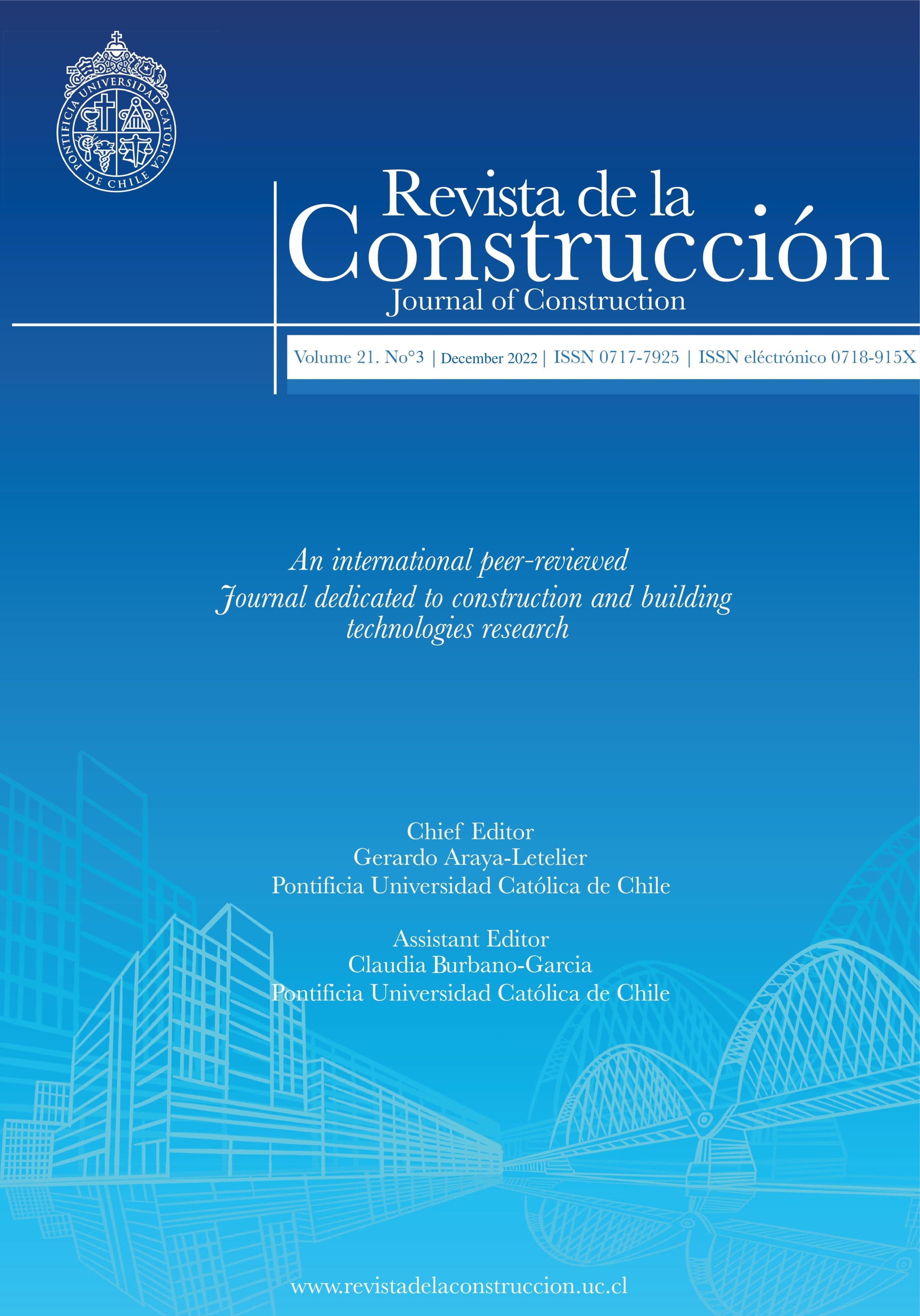Gravel impact compaction piers as a method of soil improvement
DOI:
https://doi.org/10.7764/RDLC.21.3.539Keywords:
Liquefaction, gravel impact compaction piers, soil improvement, soil compaction, multi-layer soil.Abstract
The purpose of this study was to evaluate the performance of gravel impact compaction piers system (GICPs) in improving a 3.5m thick loose silty sand in a multilayer coastal soil system located in Bushehr, Iran. The liquefiable sandy soil layer was layered on clay layers with moderate to very stiff consistency and below the engineering embankment layer with a thickness of 1.8 m. Implementation of gravel impact compaction piers is a new generation of aggregate piers. Gravel impact compaction piers were used to improve the liquefiable soil layers and to increase the bearing capacity and reduce subgrade settlement to withstand surface infrastructures. The process of making gravel impact compaction piers in a triangular or square-patterned grid was created using three types of special mandrels and feeding and compacting the gravels in the cavity in several stages without removing the soil from the cavities. The experience gained in this case study showed that artificial liquefiable was created immediately after the construction of these piers in a limited area and the soil became unstable. After about 11-14 days, the soil stabilized rapidly. The results of the standard penetration test in the matrix soil around the piers showed that the amount of (N1)60 in compacted soils was in the range of 21-30 and on average 15 times the amount of (1-3) in the initial soil. Also, the relative density of the initial soil was increased from 25% to 75% after soil improvement. Accordingly, by relying merely on the compaction properties of the piers and without relying on other primary soil remediation factors, such as piers drainage and soil texture change, the safety factor of the improved soil is 1.7-1.95 times the minimum required according to the two risk levels in the design.
Downloads
References
Barksdale, R. D., & Bachus, R. C. (1983). Design and Construction of Stone Columns Volume II, Appendixes. National Technical Information Service.
Farias, M. M., Nakai, T., Shahin, H. M., Pedroso, D. M., Passos, P. G. O., & Hinokio, M. (2005). Ground densification due to sand compaction piles. Soils and Foundations. doi:10.3208/sandf.45.2_167
Prieb, H. J. (1995). The design of vibro replacement. Ground Engineering. doi:10.1016/0148-9062(96)80092-1
Harada, K., & Ohbayashi, J. (2017). Development and improvement effectiveness of sand compaction pile method as a countermeasure against liquefac-tion. Soils and Foundations. doi:10.1016/j.sandf.2017.08.025
Hatanaka, M., Feng, L., Matsumura, N., & Yasu, H. (2008). A study on the engineering properties of sand improved by the sand compaction pile method. Soils and Foundations. doi:10.3208/sandf.48.73
IS 15284 (part 1). (2003). Design and construction for ground improvement-Guidelines. Bureau of Indian Standards, New Delhi. doi:ICS 93.020
Kitazume, M. (2005). The Sand Compaction Pile Method. CRC Press. doi:10.1201/9781439824696
Niroumand, B. (2018). 9915051. United States of America. doi:E02D 3/08 (20060101); E02D 5/62 (20060101); E02D 27/14 (20060101); E02D 27/18 (20060101); E02D 27/26 (20060101); E02D 5/60 (20060101).
Okamura, M., Ishihara, M., & Oshita, T. (2003). Liquefaction resistance of sand deposit improved with sand compaction piles. Soils and Foundations. doi:10.3208/sandf.43.5_175
Okamura, M., Ishihara, M., & Tamura, K. (2006). Degree of saturation and liquefaction resistances of sand improved with sand compaction pile. Journal of Geotechnical and Geoenvironmental Engineering. doi:10.1061/(ASCE)1090-0241(2006)132:2(258)
Priebe, H. J. (1998). Vibro replacement to prevent earthquake induced liquefaction. Ground Engineering.
Recommendations for the design, calculation, construction and quality control of stone columns under buildings and sensitive structures. (2013). Revue Française de Géotechnique. doi:10.1051/geotech/2013144051
Salahi, A., Niroumand, H., & Kassim, K. A. (2015). Evaluation of stone columns versus liquefaction phenomenon, Scientific World Journal, 20th ed, 2015, pp.739-759
Shields, C. S., FitzPatrick, B. T., & Wissmann, K. J. (2004). Modulus load test results for rammed aggregate piers TM in granular soils. In Geotechnical Special Publication. doi:10.1061/40713(2004)54
Yoshimi, Y., Tanaka, K., & Tokimatsu, K. (1989). Liquefaction resistance of a partially saturated sand. Soils and Foundations. doi:10.3208/sandf1972.29.3_157
Downloads
Published
How to Cite
Issue
Section
License
Copyright (c) 2022 Hamed Niroumand, Bahman Niroumand

This work is licensed under a Creative Commons Attribution-NonCommercial-NoDerivatives 4.0 International License.








